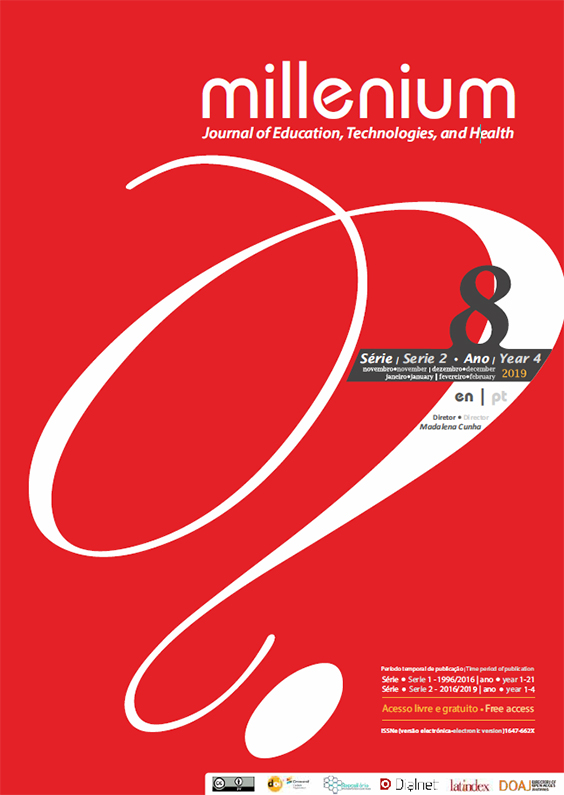Aplicación de las metodologías Lean en la reducción de los tiempos de setup en la industria farmacéutica
DOI:
https://doi.org/10.29352/mill0208.04.00220Palabras clave:
Lean, Industria Farmacéutica, Herramientas Lean, SMEDResumen
Introducción: La competitividad internacional acentuada motivada por la globalización con el objetivo de alcanzar un público que cada vez se nota más exigente, hace de la disminución de costo y aumento de la calidad una necesidad primaria transversal a cualquier sector. La industria de medicamentos genéricos donde el precio es el arma principal en el alcance del consumidor no es una excepción y crea una fuerte necesidad en la aplicación de las metodologías Lean con el fin de optimizar la producción.
Objetivos: Reducir los tiempos de setup mediante la aplicación de metodologías lean estructurado por un modelo propuesto.
Métodos: En el transcurso de este estudio se revisó la bibliografía referente al origen y a las varias metodologías Lean, siendo propuesto un modelo de aplicación. La implementación se basó en un estudio detallado de los cambios resultando en un conjunto de propuestas de solución dedicadas a los principales problemas aplicando varias herramientas lean.
Resultados: Reducción de los tiempos de cambio en 20% y tiempos de espera en 24,5% en el plazo de 3 meses
Conclusiones: La aplicación de las metodologías Lean reveló una gran utilidad en la identificación de las causas y en la creación de soluciones. La implementación de este modelo, aunque en una fase inicial, permitió no sólo reducir los tiempos de cambio, sino como otras mejoras como la disminución del número de esperas. Sin embargo, esta aplicación, debido por estar inserta en una industria farmacéutica, tiene algunos procedimientos que no pueden ser alterados limitando los tiempos.
Descargas
Citas
Al-Aomar, R. (2011). Applying 5S lean technology: An infrastructure for continuous process improvement. Academy of Science, Engineering and Technology.
Bevilacqua, M., Ciarapica, F. E., Mazzuto, G., & Paciarotti, C. (2013). The impact of RFID technology in hospital drug management: An economic and qualitative assessment. International Journal of RF Technologies: Research and Applications, 4.
Boztinaztepe, B., & Canan, F. (2008). Lean Tools for Reducing Production Time and Satisfying Employees - A Case Study.
Culley, S., Owen, G., Mileham, A., & McIntosh, R. (2001). Improving Changeover Performance. Butterworth-Heinemann.
Dillon, A. P., & Shingo, S. (1985). A Revolution in Manufacturing: The SMED System.
Ferradás, P. G., & Salonitis, K. (2013). Improving changeover time: A tailored SMED approach for welding cells. Procedia CIRP, 7.
Gwiazda, A. (2006). Quality tools in a process of technical project management. Journal of Achievements in Materials and Manufactuting Engineering.
Jeffrey K. Liker. (2006). The Toyota way: 14 management principles from the world’s greatest manufacturer. Action Learning: Research and Practice.
Karam, A.-A., Liviu, M., Cristina, V., & Radu, H. (2018). The contribution of lean manufacturing tools to changeover time decrease in the pharmaceutical industry. A SMED project. Procedia Manufacturing.
Kumar, B. S., & Abuthakeer, S. S. (2013). Implementation of Lean Tools and Techniques in an Automotive Industry. Journal of Applied Sciences.
Kumar, J., Soni, V. K., & Agnihotri, G. (2014). Impact of TPM implementation on Indian manufacturing industry. International Journal of Productivity and Performance Management.
McIntosh, R. I., Culley, S. J., Mileham, A. R., & Owen, G. W. (2000). A critical evaluation of Shingo’s ‘SMED’ (Single Minute Exchange of Die) methodology. International Journal of Production Research.
Nagyova, A., Palko, M., & Pacaiova, H. (2015). Analysis and Identification of Nonconforming Products By 5W2H. 9th International Quality Conference.
Pinto, J. P. (2014). Pensamento Lean - A filosofia das organizações vencedoras (6th ed.).
Rauch, E., Damian, A., Holzner, P., & Matt, D. T. (2016). Lean Hospitality-Application of Lean Management Methods in the Hotel Sector. Procedia CIRP.
Schmitt, B. (2017). Top 10 Automakers For June 2017: Volkswagen Reigns And Notion Of “Peak Car” Takes A Hit. Retrieved from https://www.forbes.com/sites/bertelschmitt/2017/08/16/top-10-automakers-july-2017-no-peak-car/#28d921c915e5
Seth, D., & Gupta, V. (2005). Application of value stream mapping for lean operations and cycle time reduction: An Indian case study. Production Planning and Control.
Sohani, Y. D. N. (2011). Single Minute Exchange of Dies: Literature Review.
Sullivan, W. G., McDonald, T. N., & Van Aken, E. M. (2002). Equipment replacement decisions and lean manufacturing. Robotics and Computer-Integrated Manufacturing.
Tommelein, I. D., & Ballard, G. (1999). Proceedings IGLC. 7th Conference of the International Group for Lean Construction.
Van Goubergen, D., & Van Landeghem, H. (2002). Rules for integrating fast changeover capabilities into new equipment design. Robotics and Computer-Integrated Manufacturing.
Wallace, S. W., & Choi, T. M. (2011). Editorial: Challenges in apparel production planning and control. Production Planning and Control.
Williamson, R. (2015). A Tribute to the Father of Total Productive Maintenance.
Womack, J. P. (1990). The Machine That Changed the World.
Descargas
Publicado
Cómo citar
Número
Sección
Licencia
Los autores que sometan propuestas para esta revista estarán de acuerdo con los siguientes términos:
a) Los artículos serán publicados según la licencia Licença Creative Commons (CC BY 4.0), conforme el régimen open-access, sin cualquier coste para el autor o para el lector.
b) Los autores conservan los derechos de autor y conceden a la revista el derecho de la primera publicación, se permite la divulgación libre del trabajo, desde que sea correctamente atribuida la autoría y la publicación inicial en esta revista.
c) Los autores están autorización para firmar contratos adicionales separadamente, para la distribución no exclusiva de la versión del trabajo publicada en esta revista (ej.: publicar en un repositorio institucional o como capítulo de un libro), con reconocimiento de la autoría y publicación inicial e esta revista.
d) Los autores tienen permiso y son alentados a publicar y distribuir su trabajo on-line (ej.: en repositorios instituciones o en su página personal) ya que eso podrá generar alteraciones productivas, así como aumentar el impacto y la citación del trabajo publicado.
Documentos necesarios para la sumisión
Plantilla del artículo (formato editable)





